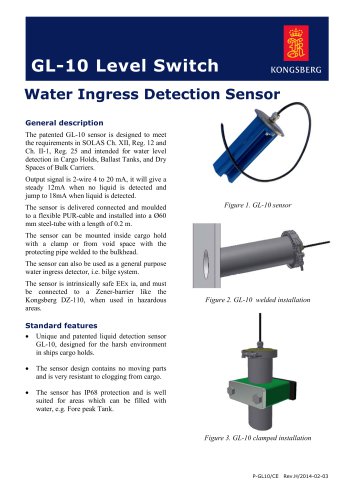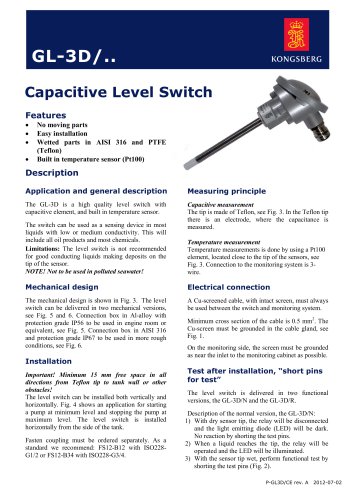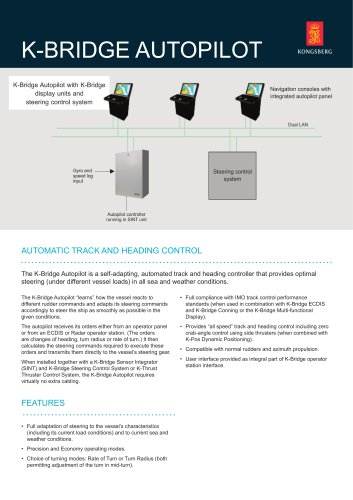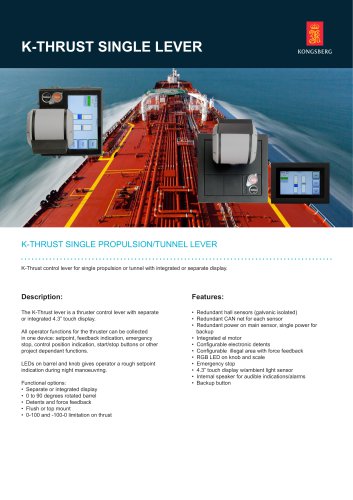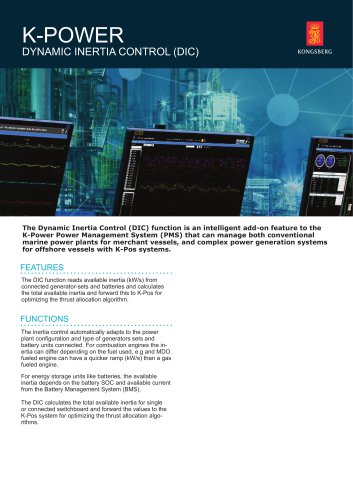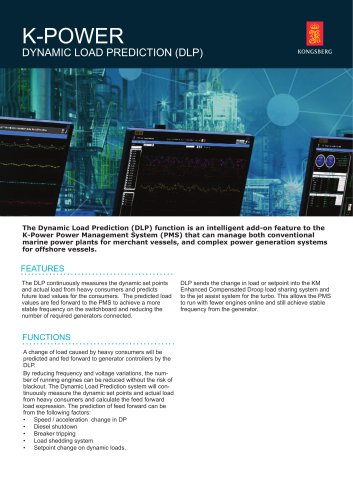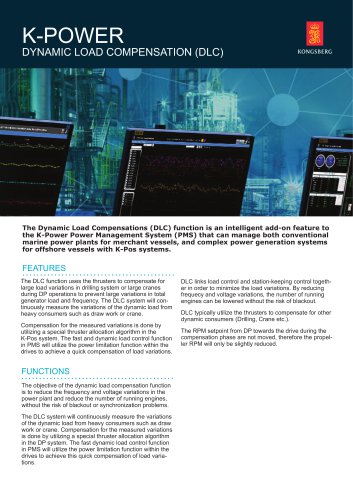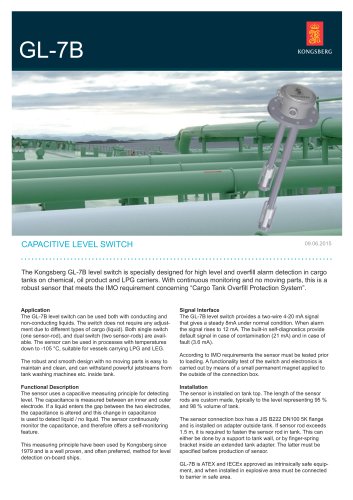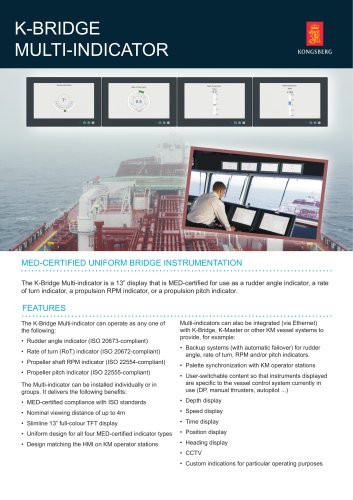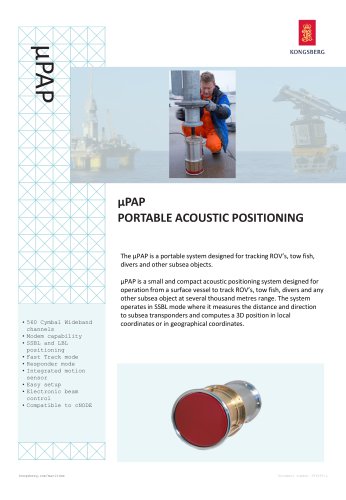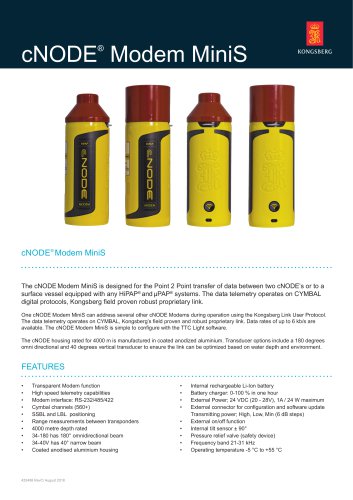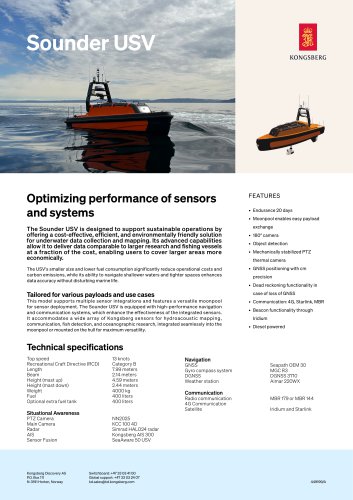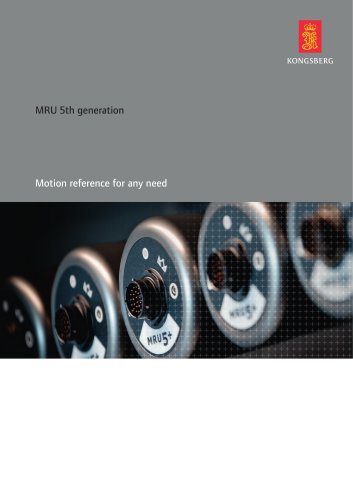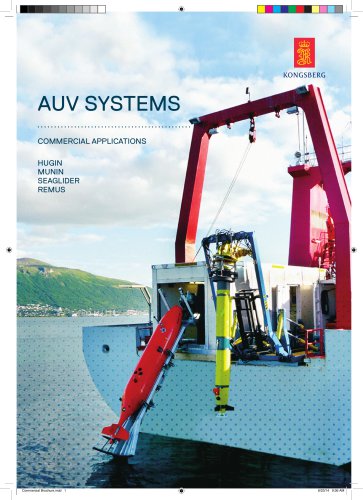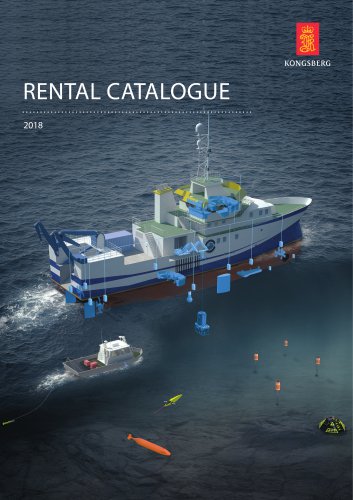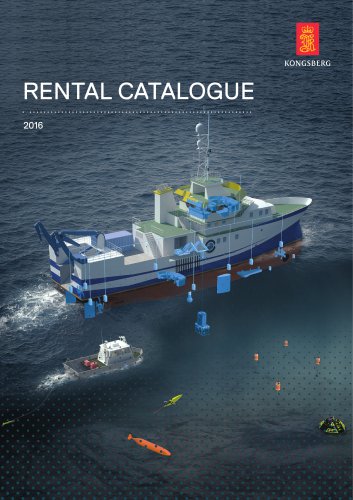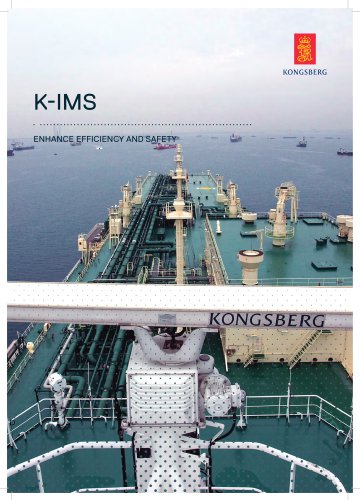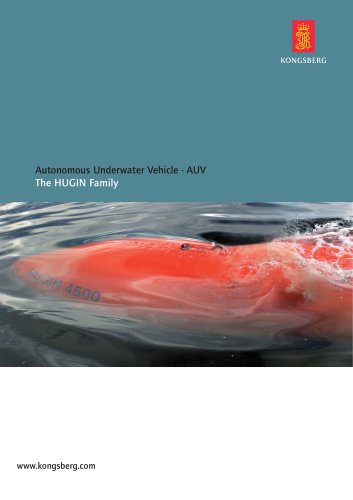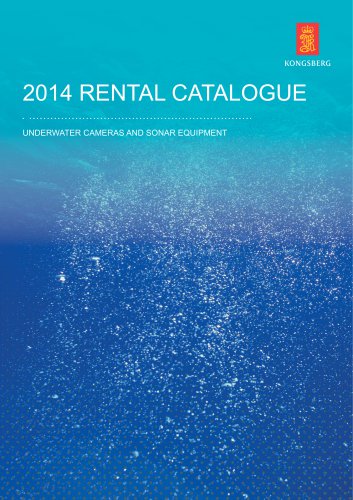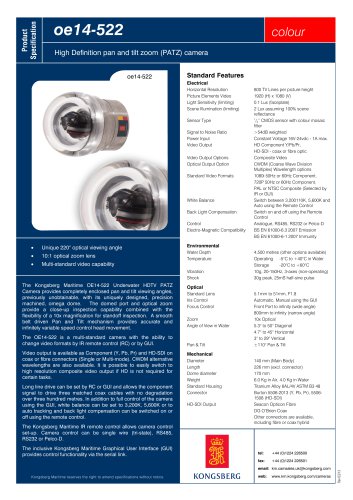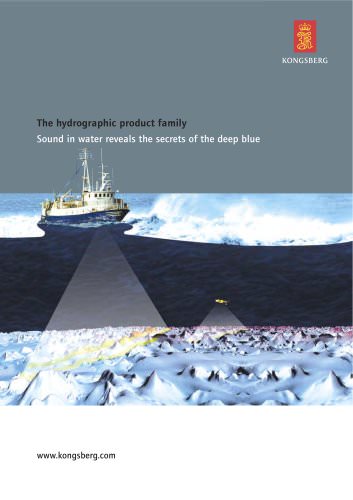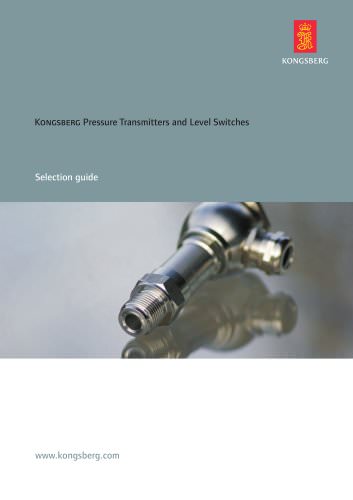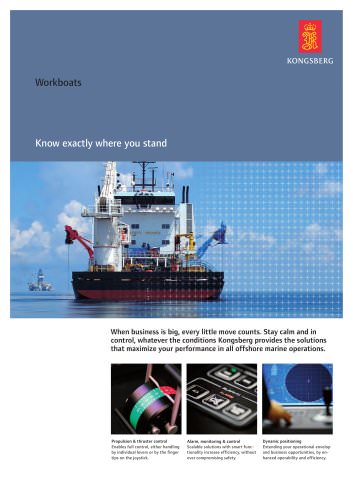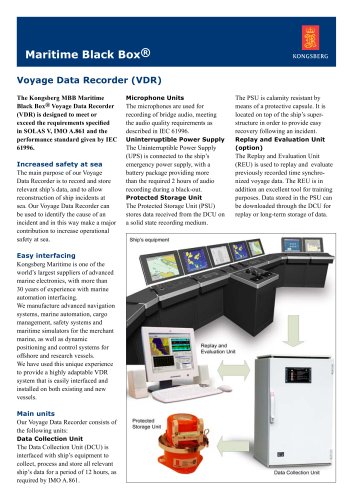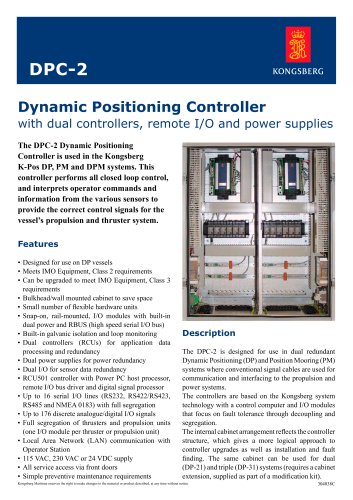
Excertos do catálogo

HIGH PRECISION ACOUSTIC POSITIONING
Abrir o catálogo na página 1
We shall earn the respect and recognition for our dedication to provide innovative and reliable marine electronics that ensure optimal operation at sea. By utilising and integrating our technology, experience and competencies in positioning, hydroacoustics, communication, control, navigation, simulation, and automation, we aim to give our customers The Full Picture. Our success depends on the success of our customers. Actively listening to our customers and truly understanding their needs, and then translating these needs into successful products and solutions is central to achieving our...
Abrir o catálogo na página 2
The HiPAP family consists of the world’s most successful underwater positioning systems. It was first developed with a focus on the Super Short Base Line (SSBL) principle, as this was a market requirement of trying to avoid the Long Base Line (LBL) principle in deep water and in accurate seabed survey applications. The main advantage of the SSBL principle is that it only requires installation of a single vessel-mounted transducer and one subsea transponder. The unique transducer technology and advanced digital signal processing was found to be the ideal solution for obtaining the optimal...
Abrir o catálogo na página 3
SUPER (ULTRA) SHORT BASE LINE SSBL (USBL) is the simplest underwater positioning principle in operation. The Super Short Base Line refers to the very short distance between the active piezo-electric elements in the transducer, which is lowered under the vessel. The SSBL principle has the obvious advantage that it requires no installation of calibrated array transponders on the seabed. Only the targets that are to be positioned must be equipped with a transponder. An SSBL system measures the horizontal and vertical angles together with the range to the transponder(s), giving a 3D position...
Abrir o catálogo na página 4
HiPAP SYSTEM ADVANTAGES ® EXTREME POSITIONING ACCURACY The HiPAP system establishes subsea positioning so accurate in SSBL mode that the more complex LBL principle is made redundant within reasonable depths. The time and cost of survey operations are therefore reduced to a minimum. The HiPAP system is a quantum leap in technology, with hundreds of elements in a spherical transducer. These elements enable an extremely high internal redundancy reliability and a high degree of directivity. The same advanced transducer technology is utilised across the entire HiPAP family, together with digital...
Abrir o catálogo na página 5
HiPAP SYSTEM MODULES ® OPERATOR UNIT WITH APOS All HiPAP systems use the same Acoustic Positioning Operator Station (APOS) and Man Machine interface. The APOS consists of a colour display, computer, keyboard and tracker-ball. The APOS performs all user interfaces and controls the transceiver data. The APOS runs with Windows software, which enables the operation of the HiPAP in a familiar fashion. Multiple Operator Stations are possible with no limit to how many are onboard a vessel. One Operator Station will always be primary and all the others will be secondary. A secondary station may...
Abrir o catálogo na página 6
EXTERNAL INTERFACES A standard HiPAP system is interfaced to both heading and vertical reference sensors. A GNSS surface navigation system may also be interfaced in order to refer the subsea position data to absolute geographical coordinates. • The optional Modular Top Section (main body extension section between the transducer and main body) This sections can also have a variety of built-in sensors, i.e. high accuracy Depth Sensor, Sound Velocity Sensor, Inclinometers, etc. TRANSPONDERS AND RESPONDERS The underwater target to be positioned must have a transponder or a responder installed....
Abrir o catálogo na página 7
CYMBAL ACOUSTIC PROTOCOL ® HiPAP Model 502/452/352/102 systems are the third generation HiPAP systems which have a new transceiver unit. The Cymbal acoustic protocol utilizing the wideband Direct Sequence Spread Spectrum (DSSS) signals is a standard feature. The Cymbal protocol transmits more energy into the water, and together with the uniqueness coding, new filtering and acoustic processing techniques. Example of a time-frequency plot of Cymbal signals for navigation and communication. High intensity signals are from HiPAP, followed by weaker replies from a remote cNODE® Improved...
Abrir o catálogo na página 8
RELIABLE UNDERWATER REFERENCE FOR DP SYSTEMS No other acoustic positioning system has more builtin experience than KONGSBERG's HiPAP. The system always sends raw position data to the Dynamic Positioning (DP) system, allowing the DP itself to perform the evaluation, weighting and filtering of its references. As KONGSBERG is also one of the world’s major suppliers of DP systems, we know the challenges of the tough and noisy environment onboard vessels controlled by a DP. All HiPAPs can be integrated with HAIN Reference system to enhance the performance of the acoustic reference. SURVEY...
Abrir o catálogo na página 10
LONG BASE LINE – WHEN NECESSARY FOR DP KONGSBERG introduced the LBL system in 1992, and has since become the market leader for supply of LBL and combined LBL/SSBL systems for vessel positioning. At some point of range, depending on the application, the SSBL principle can have limitations within DP reference due to the angle accuracy; deviation increases with the range. The HiPAP with optional LBL features is a flexible solution combining the advantages of both SSBL and LBL. The HiPAP has better long range performance than traditional wide beam systems. LONG BASE LINE – FOR POSITIONING OF...
Abrir o catálogo na página 11
DUAL ACCURACY MODE The use of two transducers will increases the electrical and also acoustic redundancy, as one transducer may have a better location with respect to noise environments and reflections. With optional dedicated software the SSBL accuracy will improve with 30% based on the statistical improvements of using a dual system. MULTI-USER LONG BASE LINE FOR THE POSITIONING OF MANY VESSELS AND SUBSEA The Multi-User LBL (MULBL) function enables several individual vessels and ROV units to position themselves using the same seabed transponder array. MULTI-LBL FUNCTION FOR MULTIPLE...
Abrir o catálogo na página 12Todos os catálogos e folhetos Kongsberg Maritime
-
GL-10
2 Páginas
-
GL-3D
4 Páginas
-
K-Bridge AP
2 Páginas
-
K-THRUST
2 Páginas
-
GL-7B
2 Páginas
-
K-BRIDGE MULTI-INDICATOR
2 Páginas
-
μPAP
3 Páginas
-
cNODE® Modem MiniS
2 Páginas
-
Sounder
1 Páginas
-
AutoChief 600
2 Páginas
-
Hugin product specification
2 Páginas
-
DP Operator Station-650
2 Páginas
-
Compact DP Operator Station
2 Páginas
-
Dynamic positioning systems
9 Páginas
-
DP Logger
2 Páginas
-
K-Thrust TC
4 Páginas
-
K-Thrust RCS
2 Páginas
-
cC-1
2 Páginas
-
cJoy WT
2 Páginas
-
cJoy OT
2 Páginas
-
cJoy Controller
2 Páginas
-
cJoy PE
2 Páginas
-
Kongsberg Temperature Sensors
5 Páginas
Catálogos arquivados
-
EM 2040C MKII
2 Páginas
-
DRS 500/IMS 500
2 Páginas
-
The Seapath family
12 Páginas
-
mini MRU
2 Páginas
-
Vessel motion monitoring
2 Páginas
-
Company brochure
19 Páginas
-
The MRU Family of Products
16 Páginas
-
company borchure 2019
13 Páginas
-
MGC R2
2 Páginas
-
DP alert system
2 Páginas
-
Automatic DP alert
2 Páginas
-
AUV systems for commercial applications
16 Páginas
-
EELUME500
2 Páginas
-
Camera Group Capabilities Brochure
8 Páginas
-
Seaglider - The long endurance AUV
13 Páginas
-
REMUS 6000
2 Páginas
-
REMUS 600
2 Páginas
-
Naval AUV product range
16 Páginas
-
Aquaculture monitoring system
2 Páginas
-
Munin AUV
2 Páginas
-
SEAGLIDER
2 Páginas
-
SEAGLIDER C2
2 Páginas
-
SEAGLIDER M6
2 Páginas
-
HISAS 1030
12 Páginas
-
Vessel performance optimizer
20 Páginas
-
Kongsberg Engine Monitoring Systems
12 Páginas
-
K-Chief 600 marine automation system
4 Páginas
-
K-Chief Marine automation system
16 Páginas
-
Dynamic Positioning Logger
2 Páginas
-
KM-workboats-folder
4 Páginas
-
KM OSV brochure
8 Páginas
-
Underwater Colour Zoom Camera
2 Páginas
-
K- Sim Engine, Engine room simulators
16 Páginas
-
Kongsberg Marine switchboards
9 Páginas
-
K-Nav navigation products
8 Páginas
-
K-IMS ENHANCE EFFICIENCY AND SAFETY
28 Páginas
-
OFFSHORE EQUIPMENT RENTAL CATALOGUE 2015
42 Páginas
-
REMUS catalog
8 Páginas
-
Marine Fleet Management Software
2 Páginas
-
OE14-408
2 Páginas
-
OE14-110/111
2 Páginas
-
oe15-108/109
2 Páginas
-
OE15-110/111
2 Páginas
-
Hugin family of AUV's
28 Páginas
-
Kongsberg Maritime products for tankers
32 Páginas
-
Motion Gyro Compass
2 Páginas
-
Kongsberg GlobalSim
5 Páginas
-
K-CHIEF 700
9 Páginas
-
K-CHIEF 600
4 Páginas
-
OE14-372/373
1 Páginas
-
OE14-364/365
1 Páginas
-
OE14-308
1 Páginas
-
OE14-208
1 Páginas
-
oe15-358/359
1 Páginas
-
OE15-100c/101c
1 Páginas
-
OE13-124/125
2 Páginas
-
OE14-522
1 Páginas
-
oe14-502
1 Páginas
-
AIS 200
2 Páginas
-
HPR 418
2 Páginas
-
HPR 408S
2 Páginas
-
RADius
2 Páginas
-
DPC-3
2 Páginas
-
DPC-1
2 Páginas
-
OS-650-DP
2 Páginas
-
DARPS 116
2 Páginas
-
Offshore Support Vessels
8 Páginas
-
Know exactly where you stand
4 Páginas
-
Offshore support vessels
8 Páginas
-
REMUS 100
6 Páginas
-
Autonomous Underwater Vehicle - AUV
28 Páginas
-
The hydrographic product family
32 Páginas
-
AIS 200 BF
2 Páginas
-
Offshore Drill Support CCTV Systems
6 Páginas
-
Kongsberg Mesotech DDS 9000/9001TM
2 Páginas
-
GeoSwath Plus
16 Páginas
-
Engine Room Simulator
16 Páginas
-
Kongsberg Maritime Simulation & Training
16 Páginas
-
Kongsberg Maritime Simulation & Training
16 Páginas
-
Kongsberg K-Pos Dynamic positioning
9 Páginas
-
Pressure sensors
5 Páginas
-
Signal converters
5 Páginas
-
Products for workboats
4 Páginas
-
Products for tankers
32 Páginas
-
LNG vessel automation
12 Páginas
-
Cruise
20 Páginas
-
Yacht brochure
12 Páginas
-
K-MASTER WORKSTATION
12 Páginas
-
cJoy system
2 Páginas
-
AIS 200 P
2 Páginas
-
voyage data recorder (VDR) for ships
2 Páginas
-
echo sounder for ships EN 250
2 Páginas


